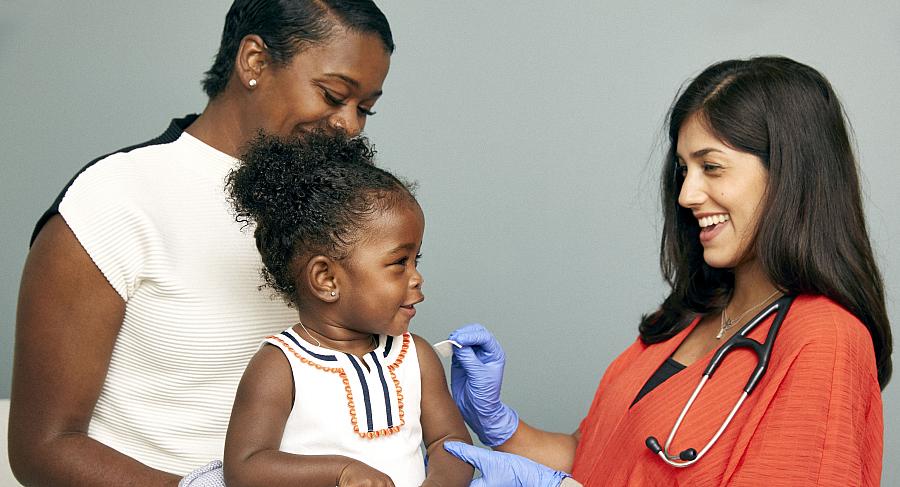Where and why are people changing their minds about vaccines?

Photographer: Heather Hazzan
This year, a Colorado lawmaker working on vaccine legislation received death threats serious enough to warrant around-the-clock protection for his family. Celebrities took to social media to declare their anti-vaccine sentiments. Enough misinformation mushroomed online that Facebook pledged to stem its spread across its platforms. All of this happened while the number of U.S. measles cases was busy busting through a 25-year record.
The World Health Organization considers vaccine hesitancy to be one of the top 10 threats to global health and research has consistently pointed to the Mountain West as a problem area. For example, CDC data shows low rates of MMR vaccination among kindergartners in our states, all of which are below the level considered necessary for herd immunity against the disease.
Public health professionals say high-level vaccination data obscures the real problem, because vaccination isn’t uniform across states or counties. Instead, it’s often a patchwork. Individual communities — and even individual schools — might be well-vaccinated while others right next door are woefully under-vaccinated. In other words, there may be pockets of high vulnerability to vaccine-preventable diseases, especially among children.
For the 2019 Data Fellowship, I will analyze available vaccination data to identify specific locations in our region that are especially vulnerable to — and, conversely, especially protected against — vaccine-preventable disease.
Earlier this year, I looked at schools and kindergartens across Colorado with more than 50 students. I found that for the 2017-2018 school year, there were more than 1,100 schools and kindergartens with less than 95% of the student body reported as being fully vaccinated against measles, mumps and rubella. More than 500 of those schools and kindergartens had MMR vaccination rates below 90%.
Now I’d like to zoom out and look at how the 2018-2019 school year shook out in multiple Mountain West states. I also hope to analyze the available data on local rates of personal exemptions, where parents choose not to get their kids vaccinated for reasons other than religious or medical ones (Idaho, Utah and Colorado are among the 15 states that allow this).
My goal is to inform a data-driven series of stories on where vaccine hesitancy could be changing (for better or worse) and why. I plan to focus on measles, which is considered a canary in the coal mine when it comes to the resurgence of vaccine-preventable illness.
“When vaccine coverage starts to decline, measles, because it's so highly contagious, is often the first breakthrough infection you see,” said Dr. Peter Hotez, professor and dean of the National School of Tropical Medicine at Baylor College of Medicine.
Hotez and his colleagues mapped non-medical vaccine exemptions across the country. As they wrote in the journal PLOS Medicine, Idaho and Utah stood out for high — and rising — rates of vaccine exemptions.
“There are large populations in the American West that are not vaccinating their children,” said Hotez. “I would say that in some of the states we're talking about, such as Idaho, as well as some areas of Utah, we're seeing so many kids not getting their vaccines that there's a high risk that measles epidemics are going to strike the states.”
Similarly, when researchers looked at counties in the U.S. that are most vulnerable to measles outbreaks in 2019, they found three in our region among the top 25: Clark County, Nevada, Denver County, Colorado, and Salt Lake County, Utah.
“In each case the risk there is driven by a mixture of relatively low vaccination rates and, compared to the other counties, very high air travel coming from abroad,” said Sahotra Sarkar, a biologist and philosopher of science with the University of Texas, Austin.
But the situation in my region is not all doom-and-gloom — and it isn’t all about measles, either.
There are a number of promising experiments going on about how to boost vaccination for a range of illnesses. For example, a technique called “motivational interviewing” could help primary care providers communicate better with vaccine-hesitant parents. And a method called “boot camp translation” could help suss out the root cause of under-vaccination in certain rural communities in the Mountain West. Research suggests it has been effective at helping rural communities in eastern Colorado boost colorectal cancer screenings and lower hospitalizations due to asthma. Researchers setting out on a multi-year project hope it will improve vaccination rates, too.

